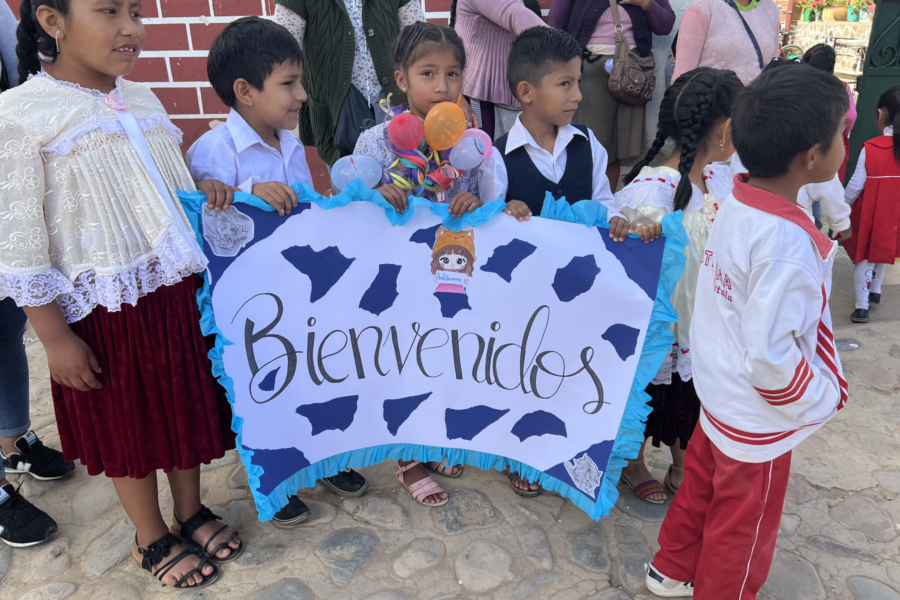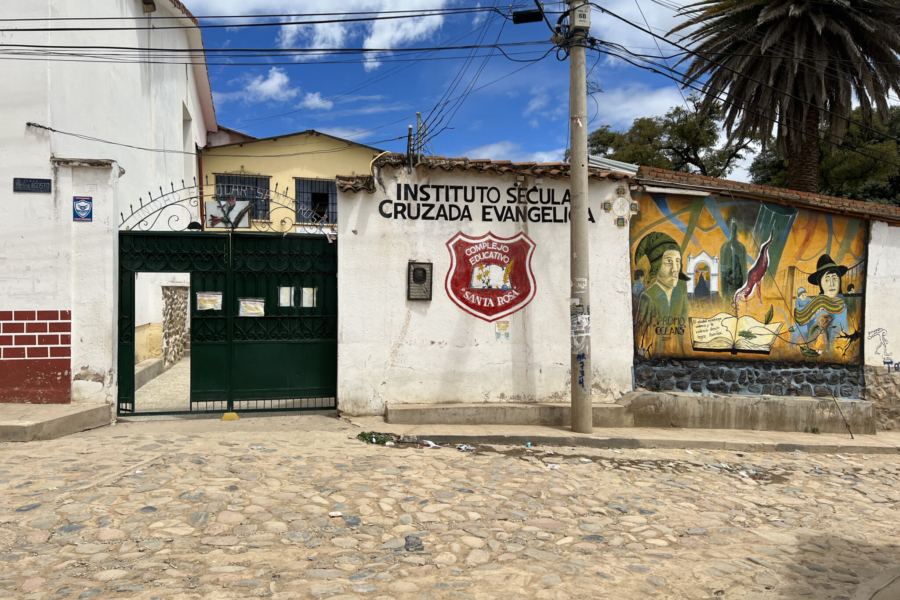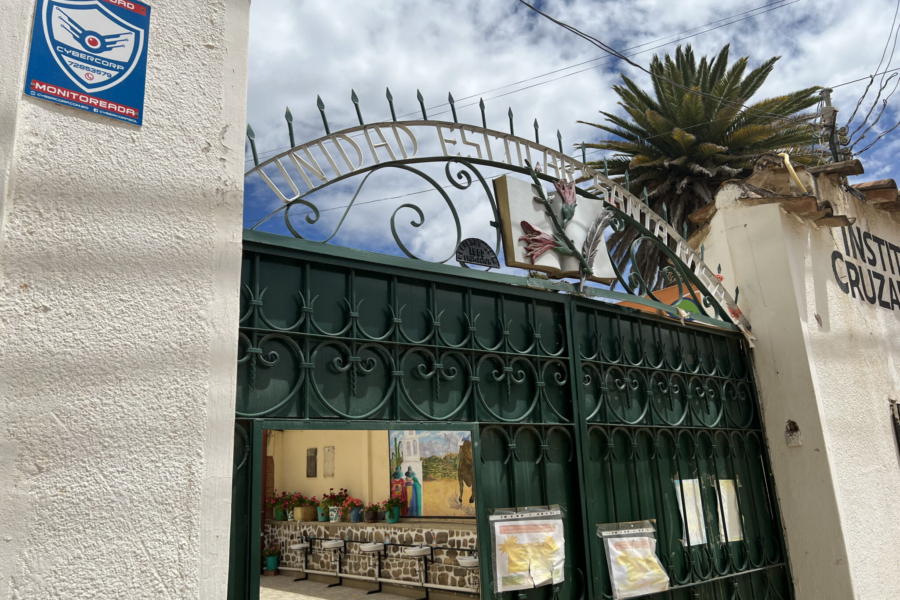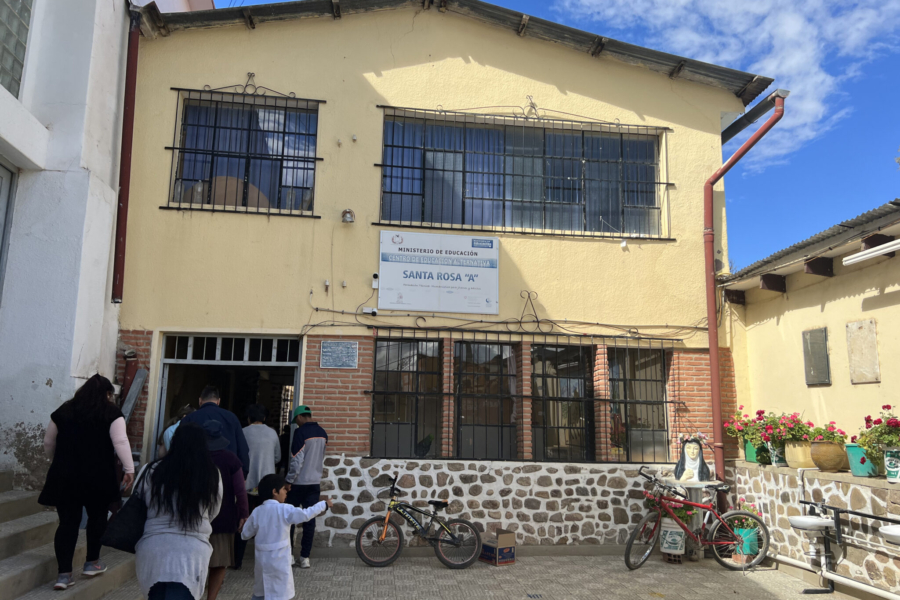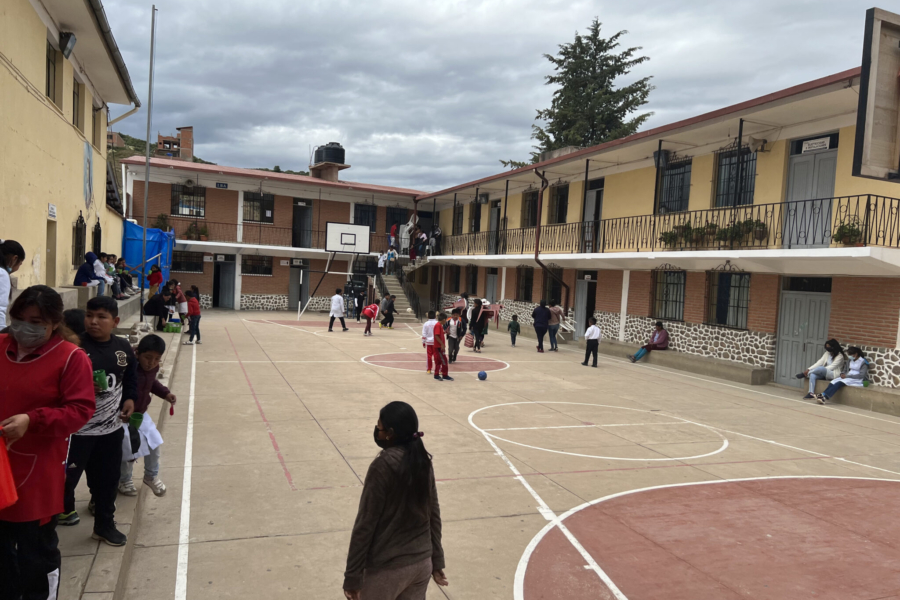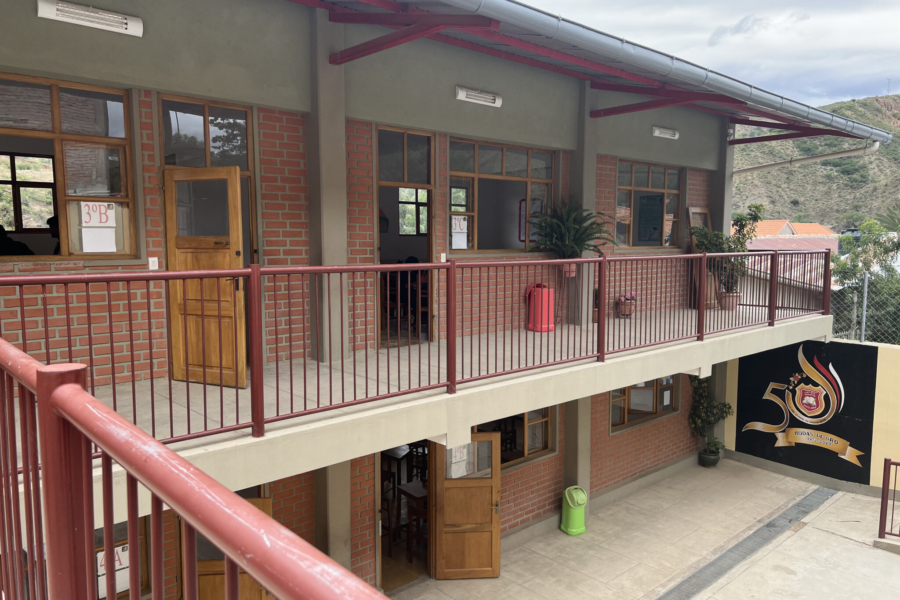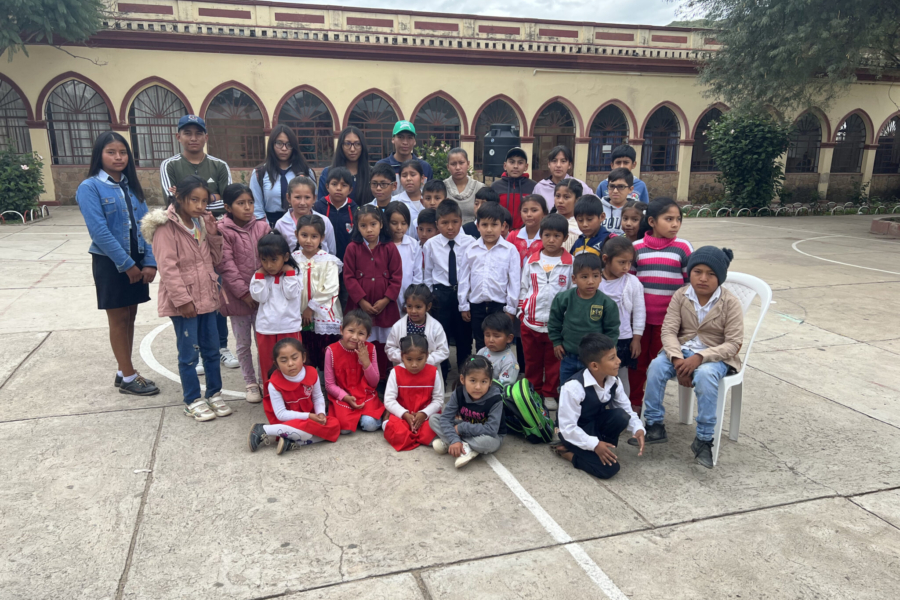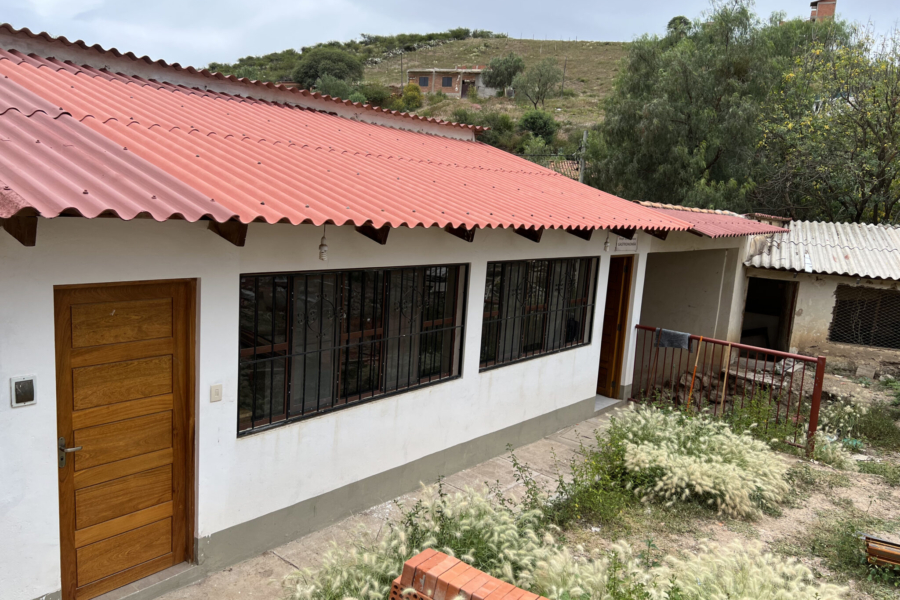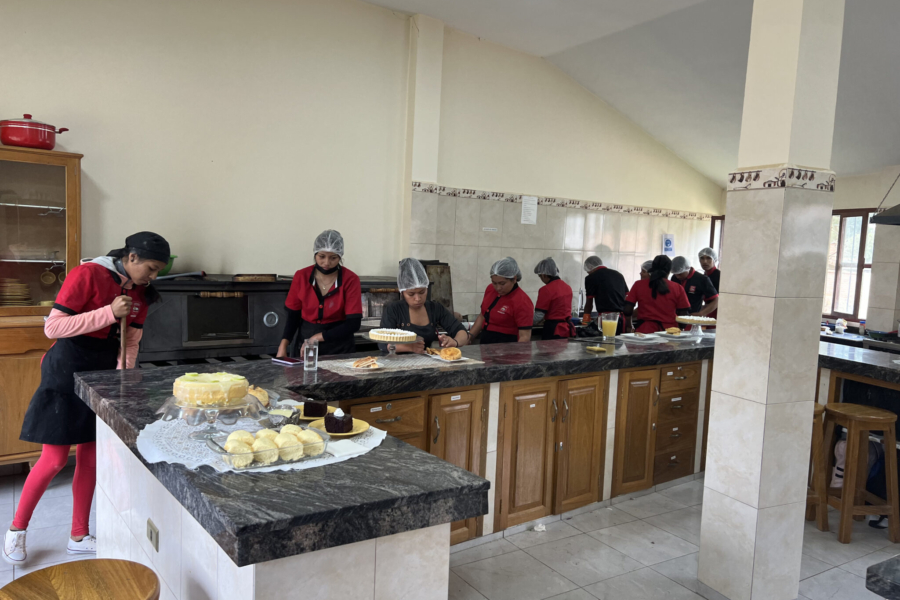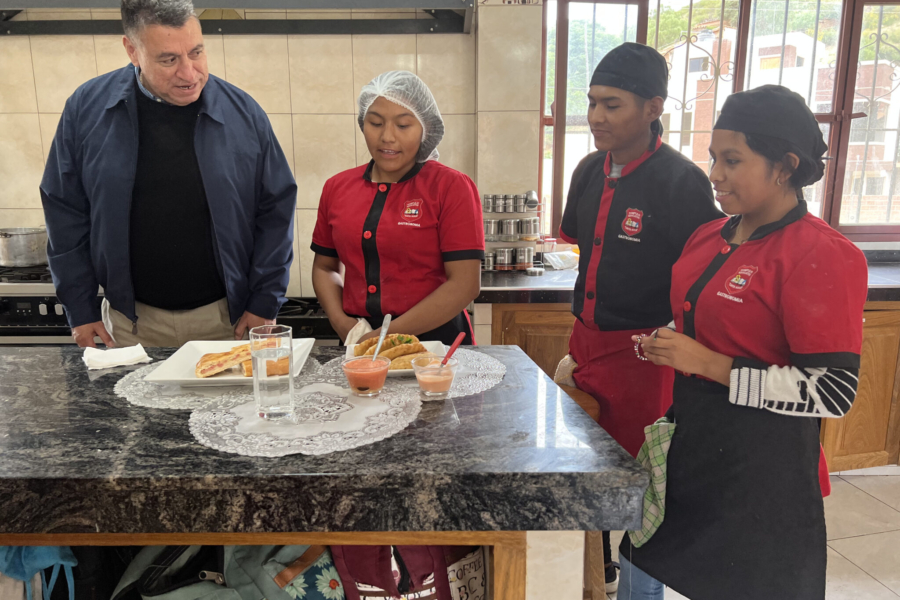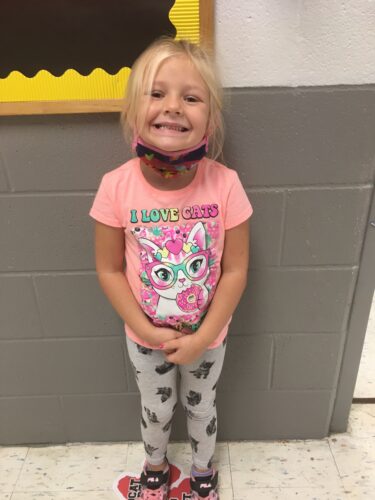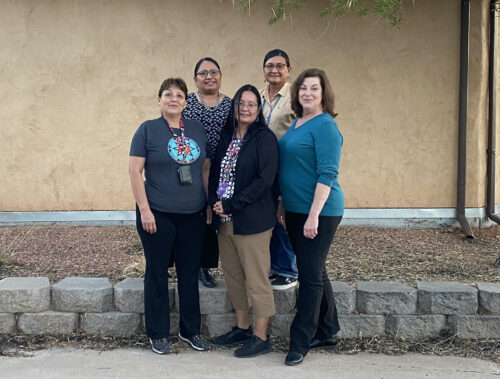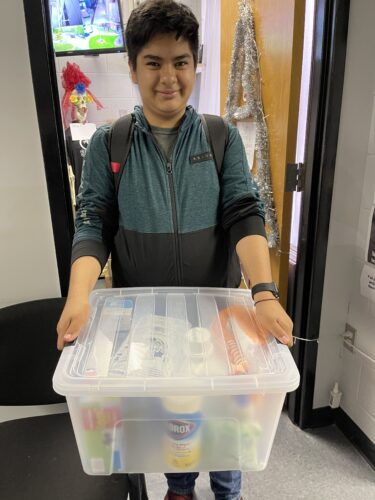After spending a few days in Santa Cruz, Bolivia, visiting with a few of our affiliated sites in the area, it was time for our Director of International Programs, Luis Bourdet, and myself to take the short trip by plane to Sucre, where Children Incorporated supports seven schools, helping hundreds of children living in poverty every year.
The students beamed with pride as we made our rounds, and Gabriella explained to Luis and me that our donors had purchased the equipment, refrigerators, kitchen tools and utensils necessary for the culinary program to exist.
I had not visited Sucre the last time I traveled to Bolivia in 2016, so I was especially excited to see the town and get a chance to meet with our volunteer coordinators and sponsored children at each of the sites. Located in the south-central part of the country, Sucre sits at a high elevation, which gives it a nice and cool temperature all year long, which I looked forward to after a few very hot days in Santa Cruz. Beyond the cool climate, Sucre is also recognized as the constitutional capital of the country, and is home to dozens of government run local schools and privately-run language schools for foreign visitors.
But, upon our arrival, before I even had the chance to really get to see Sucre itself, Luis and I ventured about twenty minutes outside of the city on our first day, to the small agricultural community of Yolata. I noticed immediately how incredibly narrow the cobblestone streets were, as we bounced down the road in the taxi. I gazed out the window, realizing just how very quaint the town was, only taking up a dozen or so city blocks in total, which made walking very convenient. Yolata is home to many farmers who struggle to grow enough food to feed their families and sell in markets, as the area is prone to drought throughout the year. This makes it difficult for them to get out of poverty — and makes it even more important that Children Incorporated is able to provide support for children growing up here.
Visiting the school
When we arrived at the front gate of the Santa Rosa School, a small group of children held a hand-made sign which read “Welcome” in Spanish. They were all dressed in traditional Bolivian clothing, ones that looked similar to the outfits we saw at the Montero School, where children had performed dances to celebrate our arrival. Luis and I stepped out of the taxi, and were greeted by our volunteer coordinator, Gabriella, who escorted us inside the school’s compound and into the courtyard, where dozens of children and their parents were seated under a small pavilion. After we were introduced to the group, the students performed songs and dances for us as a way to say “thank you” to their sponsors for all the support they receive throughout the year.
This is a large affiliation for us — 53 children are enrolled in our sponsorship program and, according to Gabriella, many more could use support from a caring sponsor. As we talked in her office after the children’s presentation, she explained that many of the impoverished families in the community didn’t have any plumbing or running water, and they did their best to sell small food items as street vendors in Sucre, but overall making ends meet was hard for them, even if both parents were able to work.
We continued talking as Gabriella led us on a tour of the school, showing us the classrooms for the middle and high school age students, and a new edition to the school that would accommodate younger students in the upcoming year, as more and more children were coming back to school after the pandemic and additional space was needed for them.
A wonderful treat during our visit
As with many of the other schools in Sucre, Gabriella explained, the Santa Rosa School is run by the government, but not funded fully by the government, so Children Incorporated has been a huge help in filling a gap when children’s parents can’t afford school supplies, clothes, food and hygiene items. And, she added, without our donors, they never would have been able to complete the culinary building that she was excited to show to us.
As we turned a corner to enter through a large doorway, to my surprise, we came upon the culinary classroom, which was filled with students in their chef’s uniforms, all lined up around counter tops filled with baked goods they had made for us! As Gabriella introduced us to the students, we had a chance to try Bolivian pastries and cakes that were not only beautiful, but absolutely delicious. The students beamed with pride as we made our rounds, and Gabriella explained to Luis and me that our donors had purchased the equipment, refrigerators, kitchen tools and utensils necessary for the culinary program to exist.
At least at the Santa Rosa School, she knew her children were being provided for.
Visiting homes in Yotala
After we said goodbye to the students, Gabriella wanted to take us to visit a few of the homes of our sponsored children before we returned to Sucre for the evening. We piled into her car and made our way out of the small town and up into the hills, where we first visited a family with two small children in our program, living in a two-room building with electricity and little else. The father told us he makes his own version of yogurt which he sells in the city, but it is a lot of work, and his pay is very low.
Their well-kept house was very bare, and I wondered how they stayed warm at nights when the temperature dropped. There was no means to heat the home, and the concrete walls offered no insulation. Shortly after, we visited another home on the side of a small mountain, where a family of three was living in one small room with no electricity or running water. The mother expressed her gratitude for her children’s sponsors, who took worry away from her while her children were at school receiving an education. At least at the Santa Rosa School, she knew her children were being provided for so they could focus on getting an education, which gave her the peace of mind she really needed.
***
How do I sponsor a child with Children Incorporated?
You can sponsor a child in one of three ways: call our office at 1-800-538-5381 and speak with one of our staff members; email us at sponsorship@children-inc.org; or go online to our sponsorship portal, create an account, and search for a child that is available for sponsorship.

